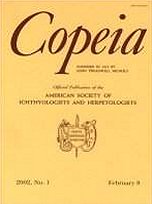Members of the genus Leptodactylus deposit eggs in foam nests; however, species vary in nest deposition sites, which may be aquatic or terrestrial, and the amount of time larvae remain in the nest. Life history characteristics are hypothesized to have a phylogenetic basis, but data to evaluate this idea are lacking for most species of Leptodactylus. We studied the ecology of tadpoles of Leptodactylus labyrinthicus in the Brazilian Cerrado to gain insight into the reproductive ecology of this species. Foam nests of L. labyrinthicus were deposited on land generally along the periphery of small, shallow ponds. Internal nest temperatures were lower, less variable, and less influenced by the environment than nest surface temperatures. Only a small percentage of eggs in each nest were fertilized, and tadpoles grew and developed within the foam while feeding on unfertilized eggs. Heavy rainfall washed the majority of tadpoles out of nests and into ponds. Tadpoles collected from the ponds had eggs in their guts, and feeding experiments confirmed that free-living tadpoles of L. labyrinthicus eat eggs of other frog species. The reproductive mode of L. labyrinthicus is intermediate between two previously described modes for closely related species. This mode may be adaptive in the unpredictable and seasonal environment in which this species occurs.
Todos os membros do gênero Leptodactylus depositam ovos em ninhos de espuma; se os ninhos são aquáticos ou terrestres e até qual estágio as larvas desenvolvem-se neles, contudo, varia entre espécies. Acredita-se que os modos reprodutivos de anuros têm uma base filogenética, mas para a maioria das espécies não existem dados suficientes para avaliar essa hipótese. Nós estudamos a ecologia dos girinos de Leptodactylus labyrinthicus no Cerrado brasileiro com o intuito de tentar compreender melhor sua ecologia reprodutiva. Os ninhos de espuma de L. labyrinthicus foram depositados sobre o chão ao longo da periferia de poças pequenas e rasas. As temperaturas internas dos ninhos foram mais baixas e variaram menos do que as temperaturas externas. Apenas uma pequena porcentagem dos ovos em cada ninho foi fertilizada e os girinos permaneceram dentro da espuma, crescendo e desenvolvendo-se através da ingestão de ovos. Chuvas fortes dissolveram os ninhos e lavaram os girinos, carregando-os para as poças. Girinos coletados nas lagoas possuiam ovos em seus intestinos, e experimentos confirmaram que girinos de L. labyrinthicus alimentam-se dos ovos de outras espécies após abandonarem os ninhos. O modo reprodutivo de L. labyrinthicus é intermediário a dois outros modos descritos para espécies próximas. Esse modo pode ser adaptativo em ambientes sazonais e imprevisiveis onde essa espécie ocorre.





